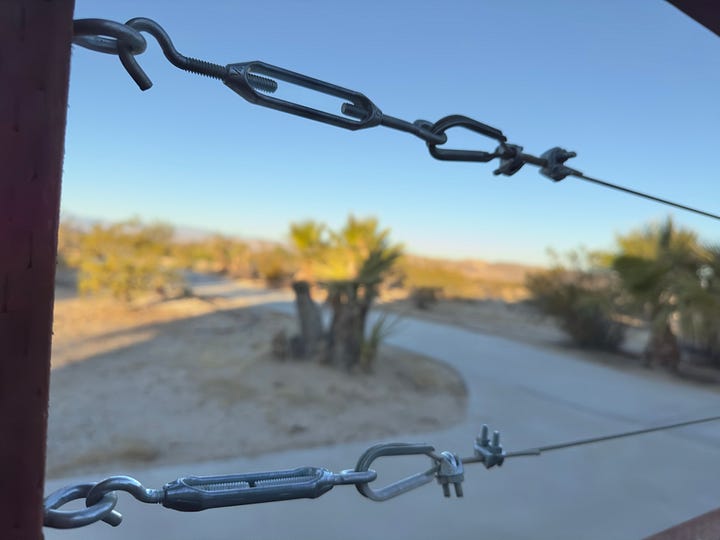Wildlife Wednesday: COYOTE KARAOKE
Final Wildlife Wednesday for 2023—have a wonderful howliday and a creatureful New Year
Shhhh. Do you hear that? Listen to them! The Children of the Night. What music they make!
Do you ever wake up to coyotes calling and wonder what they’re up to?
A coyote calls from a hill overlooking the San Fernando Valley in LA.1
Family life is important to coyotes and like dogs, they communicate with tail-wagging, eye contact, body language, and—as we saw last week—peeing.
They also howl. But they don’t just howl. They yip, bark, whine, yodel, ululate, and warble. 2
Howling helps a coyote locate members of its family and let them know how they’re doing: if they are stressed by dog or human encounters, or if they are happy and relaxed and want to let their mate and pups know.
What coyotes aren’t doing, according to researchers who have observed families over decades, is celebrating a kill. It’s tempting to think when you hear them yipping at 3 am that a jackrabbit has met its end, but it’s more likely that the kids just want to know where mom and dad are.
Local coyotes share the water dish
Do you sometimes hear a whole choir of coyotes? There might be fewer of them than you think you hear. These desert dogs harmonize so that their howls vibrate tonally with other coyote voices. Two coyotes can sound like an entire pack. This must impress any competing coyotes around.
Sometimes coyotes just howl because it must feel incredibly good to cut loose like that. I’m sure you try it sometimes. I know I have.
Let’s all go out and have a good yip-yip-yip-ki-yay!
Thank you for reading Wildlife Wednesday. We wish you happy howlidays! We’ll be back next year with an animal you might not have known lives in Twentynine Palms.
When we posted last week’s column on Facebook, people mourned the pets they’d lost to coyotes. My condolences. Coyotes ate a pair of rabbits we kept outside, and I know how horrible this is. It was a hard way to learn to keep our animals inside.


Coyotes are frequent visitors in Indian Cove so Cindy shared her custom fence design. She writes, “The bottom section is approximately 4 feet and the top is 2 feet. Coyotes pass within a few feet and none have disturbed my dogs on the other side. Good fences make for good wildlife neighbors.”
I was disturbed by the man who posted on Facebook that he tries to hit coyotes with his vehicle and another man who said he hunts coyotes on BLM land and posted a photo of his weapons. Gentlemen, I hope your hearts heal.
This video is from a cache used in developing the LA Natural History Museum’s Nature Lab, and I believe credit should go to Miguel Ordeñena.
Researcher Janet Kessler has done an astonishing long-term study of urban coyotes in San Francisco. She has captured every imaginable coyote sound here.
Thank you as always for sharing your wildlife photos and videos; we’ll include them in a feature soon. Always looking for more Twentynine Palms wildlife! Email your files to deserttrumpet29@gmail.com
Desert Trumpet writer Kat Talley-Jones is a member of the Public Arts Advisory Committee, which is a part of the City of Twentynine Palms.
Share your thoughts in the comments below or in our live chat in the Substack app. Please note that we do not allow anonymous comments—include your first and last name in your profile before commenting. Anonymous comments will be deleted.
Subscribe to the Desert Trumpet—it’s free!
Share this article—it’s free too!



Terrific writing! Love the Wildlife Wednesday(s)!
Having lived briefly in an area that had lots-o-coyotes, I often wondered what the sounds they made meant. I too thought it was due to a killing. Appreciate you educationing me. Please keep up the great work! Still waiting for the nature channel.